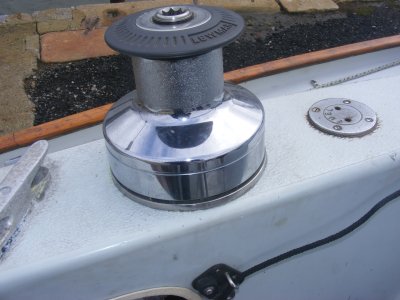NealB
Well-known member
About 4 years ago, I bought a pair of Lewmar 43 self-tailers, to replace the smaller Barient winches fitted by Westerly.
At long last, I'm actually getting round to making the swap.
The existing winches have six, nicely spaced mounting bolts: the Lewmars will need five, not so evenly spaced.
So I could, of course, fill most of the existing holes, and drill new, or .........
I could make up a stainless adaptor plate that bolts through the existing holes, and then mount the Lewmars into five tapped holes in the adaptor plate.
I'd appreciate any informed opinions/ piss-taking, please, from the wide range of engineering knowledge amongst forumites.
At long last, I'm actually getting round to making the swap.
The existing winches have six, nicely spaced mounting bolts: the Lewmars will need five, not so evenly spaced.
So I could, of course, fill most of the existing holes, and drill new, or .........
I could make up a stainless adaptor plate that bolts through the existing holes, and then mount the Lewmars into five tapped holes in the adaptor plate.
I'd appreciate any informed opinions/ piss-taking, please, from the wide range of engineering knowledge amongst forumites.

